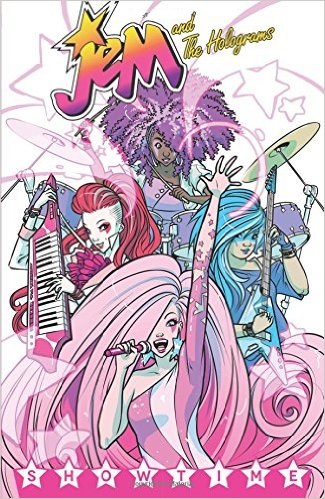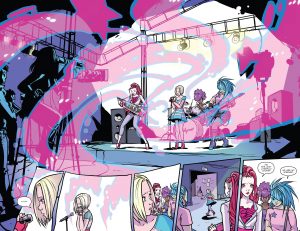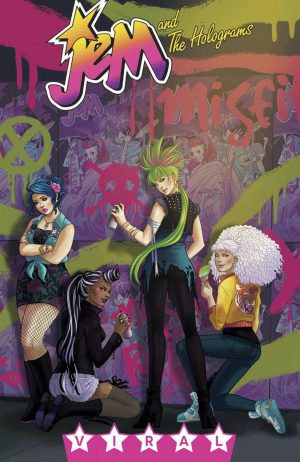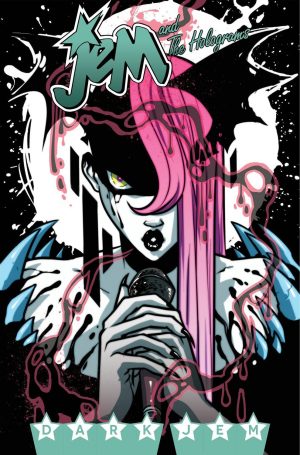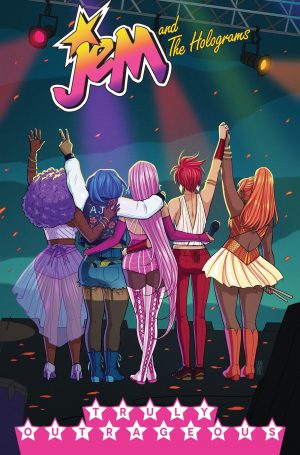Review by Ian Keogh
In the 21st century the most unlikely features are enjoying revivals that not only sell comics, but have a creative credibility about them to boot. Take Jem and the Holograms, for instance. In the 1980s a line of Hasbro toys was introduced accompanied by a shoddy cartoon series, both swathed in pink, designed to attract young girls. Who’d have thought there was an iota of residual fondness all these years later? Yet, in another sense the past is irrelevant as what Kelly Thompson and Sophie Campbell started serving in 2015 is a very good dramatic series for young girls whether or not there’s an awareness of the past.
Jerrica has a problem. She’s a great singer, but only in the studio. Put her in front of even a small audience and she chokes, and that’s beginning to frustrate her sisters and bandmates who’re trying to put together a competition video. Had she but known it, the solution has been dormant since her inventor father died, but a storm reactivates his advanced computer’s holographic interface and she can access her legacy. It’s a pair of earrings that enable her to project not only a hologram persona for herself, but other characters for her bandmates also.
Unless deliberately designed to be otherwise, every page looks clean, clear and attractive. Conveying any type of music in comics is notoriously difficult, and Campbell’s solution is montages with song lyrics incorporated in the art wrapping themselves around the singing figures. That’s coupled with emotionally strong pages where carefully crafted expressions count for a lot and a shift in artistic tone when the scene changes. Rival band the Misfits have an angry singer, and when they’re featured Campbell roughs up the look, with busier art barely constrained by the panels.
There are limitations to Jem and the Holograms. Thompson and Campbell don’t speak down to the intended audience, and are have a good understanding and sympathetic methods of dealing with issues, but there are defined parameters to what they can do, and assorted regular features of fiction for teenage girls find their way into Showtime. There’s the gig to save the community centre closing down, the jealous rival band, the curious reporter and the inevitable romantic interest, but elements carried over from what went before are merged with a 21st century perspective in which social media is frequently referenced and modern attitudes. If there’s a fault it’s that Showtime is deliberately even handed when it comes to gender attraction, but there’s barely any attention to the sole African American character, and that comes across as tokenism. The series continues with Viral, where perhaps the problem will be addressed. Both are collected in the hardcover Jem and the Holograms: Outrageous Edition.
